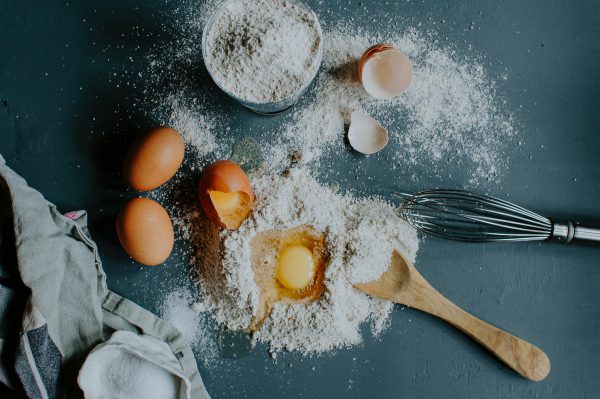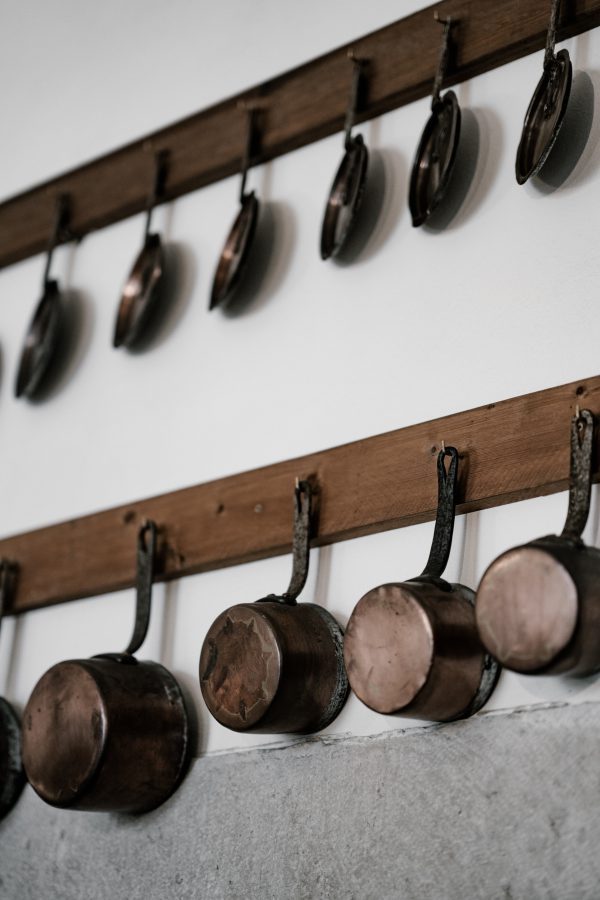Last Updated on March 19, 2023
Mortar and pestle sets have been used all around the world for thousands of years for culinary and pharmaceutical purposes. We no longer need them to make medical remedies, but they remain a crucial tool for all modern kitchens.
There’s a reason why many chefs and pro cooks collect different mortar and pestle sets made of granite, marble, copper, wood, brass, or stainless steel. Each one of them offers unique benefits that help you create wonders in the kitchen.
In this article, we shed light on the differences between marble and granite mortar and pestles, so you can get the best mortar and pestle set for your needs.
Why Use a Mortar and Pestle?
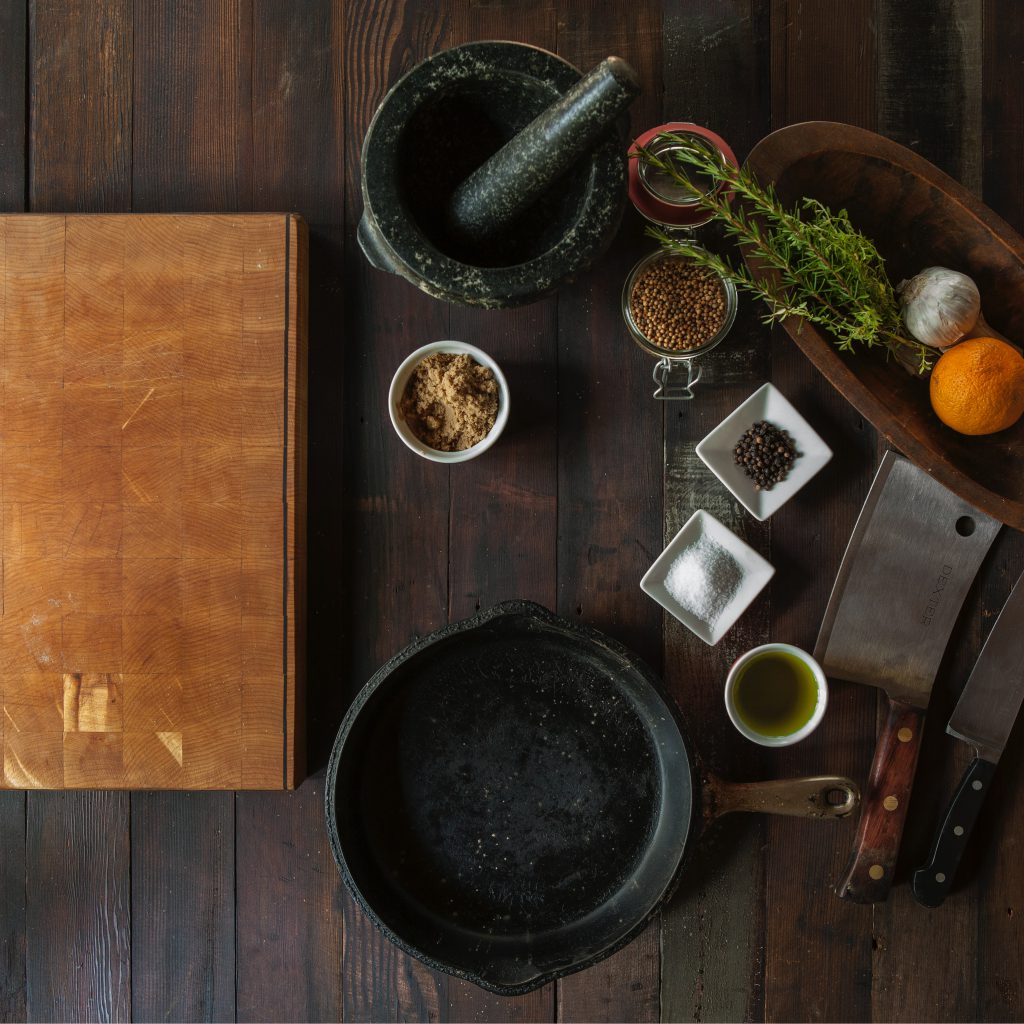
A pestle and mortar set is perfect for crushing ingredients to obtain strong flavors and interesting textures for your pastes, spreads, sauces, salsas, and spice mixes.
These days we often use blenders to cut ingredients into smaller pieces. But crushing, as opposed to cutting something open with a blade, offers a different taste and texture profile.
By manually bashing your ingredients, you burst open the cell walls and let out the flavor and aroma molecules, which is essential for enhancing the taste of the final product.
But the flavor and aroma molecules are not the only thing to consider when making a heavenly paste. There’s also the role of texture. Sure, smooth spreads like hummus are perfect as a base for your sandwiches. But usually, the more texture you have in your paste or spread, the more interesting every next bite gets.
You can test it yourself: Make a dipping sauce using a blender or a food processor and then make the same sauce using a mortar and pestle. The latter will feel, smell, and taste better.
Why Does the Material Matter?

Natural stone mortar and pestles made of marble, granite, or volcanic rock (usually basalt) are not only strong but also provide just the perfect friction thanks to their naturally porous surfaces.
These aren’t the only materials that mortar and pestles are made of. If you search for them, you’ll find brass mortars, stainless steel mortars, wooden mortars, and ceramic mortars.
They all have their own strong suits when it comes to cooking tasks, but overall, the stronger the mortar, the better it crushes tougher ingredients. On the other hand, more delicate mortars, like wooden ones, are better at treating delicate components and give you control over the texture of your paste.
Mortar and Pestle: Marble vs. Granite
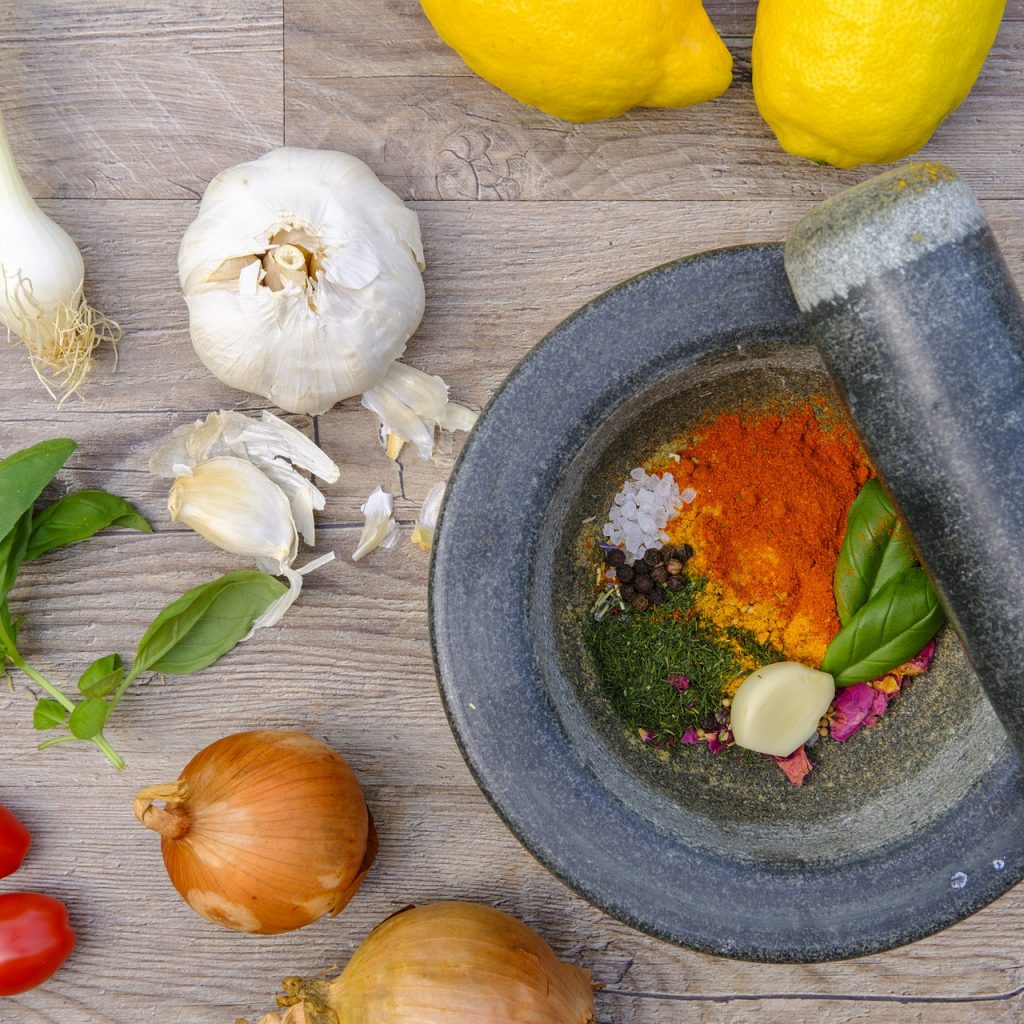
Both granite and marble are sturdy natural stones. They’re rigid and elegant looking with unique patterns. That’s why granite and marble countertops are almost staples in most kitchens.
It might not make a huge difference on the countertops or flooring other than aesthetics, but when it comes to mortar and pestles, there are fundamental differences between the two.
Marble Mortar and Pestle
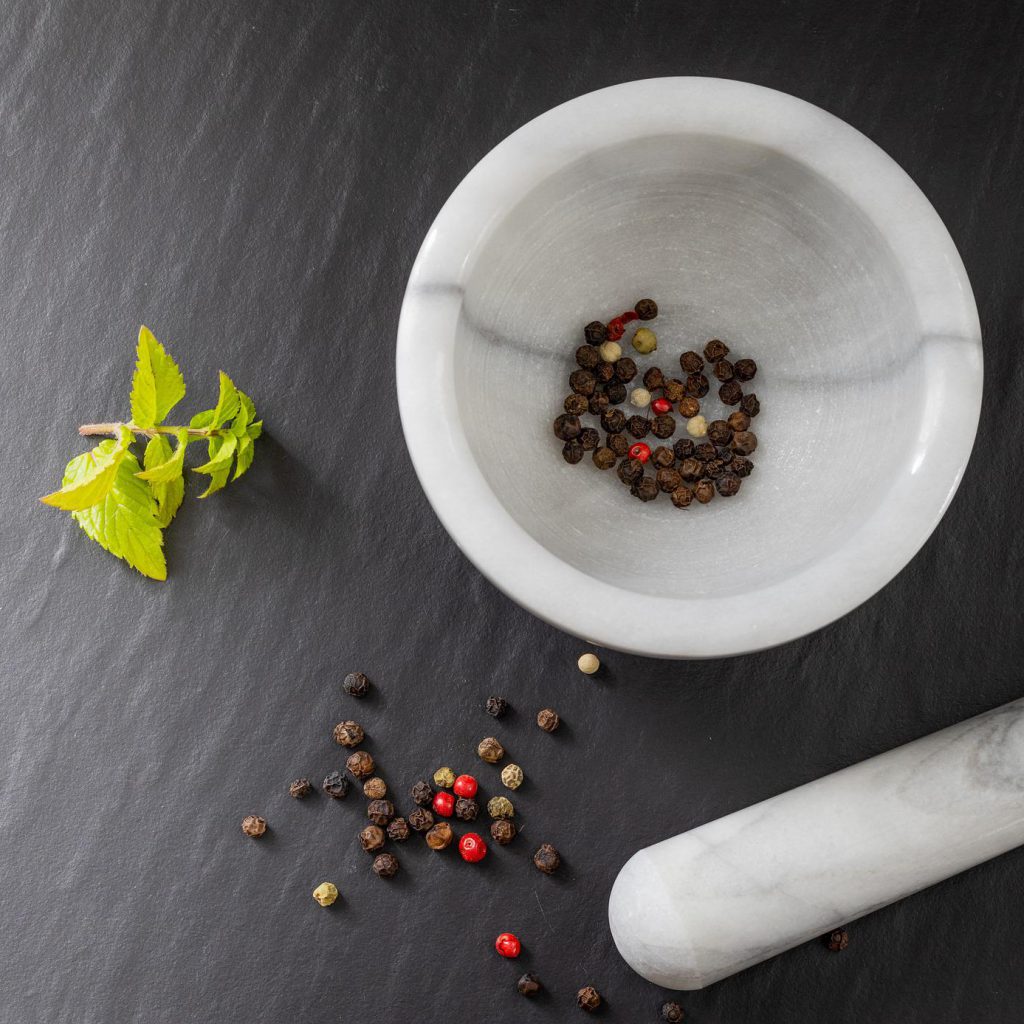
Marble is a type of metamorphic rock formed from limestone and dolomite. Over time, sedimentary rocks undergo a transformation due to intense heat and pressure, resulting in unique and beautiful marble stones. They comes in a range of colors, patterns, and grooves, which have captivated artists and sculptors for centuries.
Now, putting aside its aesthetic appeal, let’s focus on other features of this natural stone.
Hardness
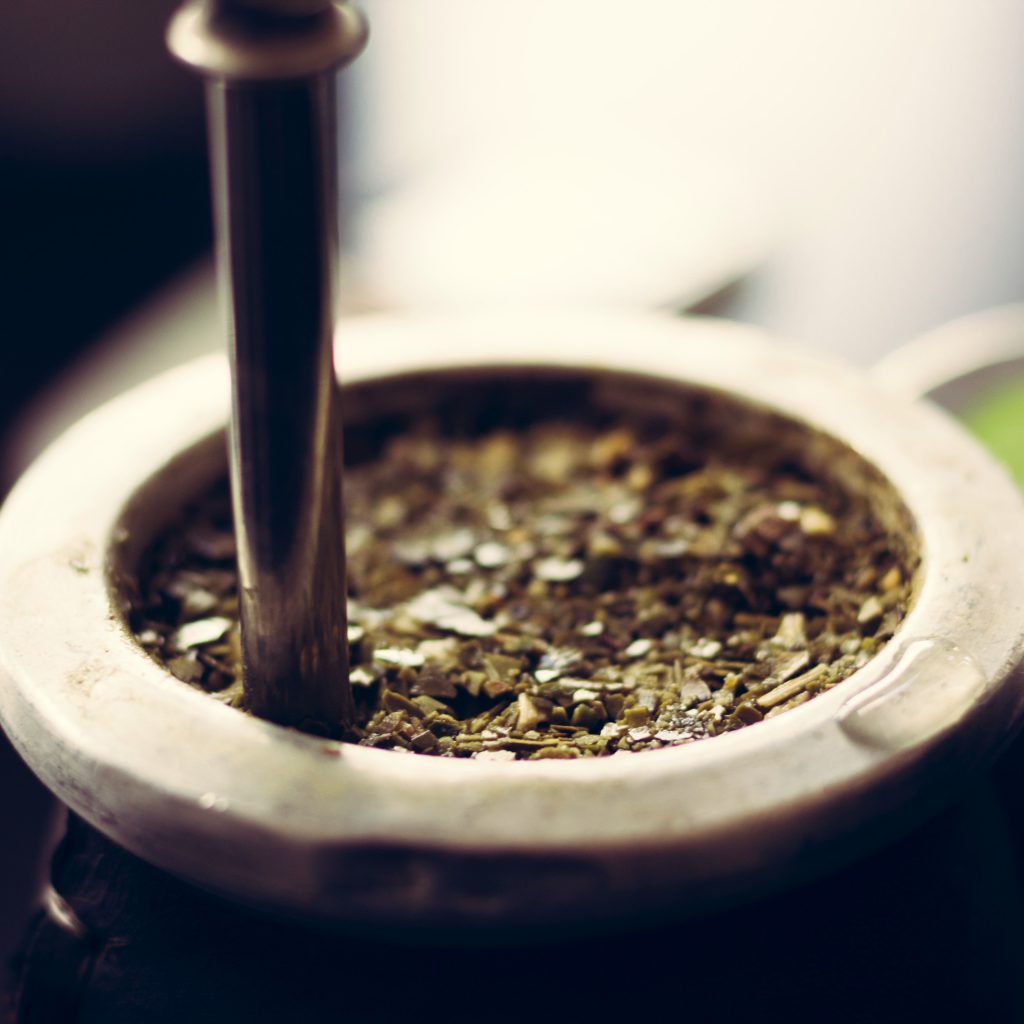
Mortar and pestles made of marble are pretty standard, especially in Mediterranean regions like Spain, Italy, and France. In fact, pesto sauce is traditionally made with a marble mortar.
Marble provides a rigid base for grinding, smashing, and bashing, but it’s not as robust as granite when it comes to durability. If you get a marble set of mortar and pestle, you need to be careful with the stone-on-stone action; if you smash your marble pestle on your mortar too hard, you might crack one of them in half or cause tiny marble particles to chip off and mix into the food.
That’s why marble mortars are often used with olive wood pestles — a Mediterranean classic. However, while wooden pestles can be helpful for certain tasks, such as grinding soft ingredients, they are not the best option when you want to grind rougher ingredients or crack nuts.
Pestle: Wooden or Marble
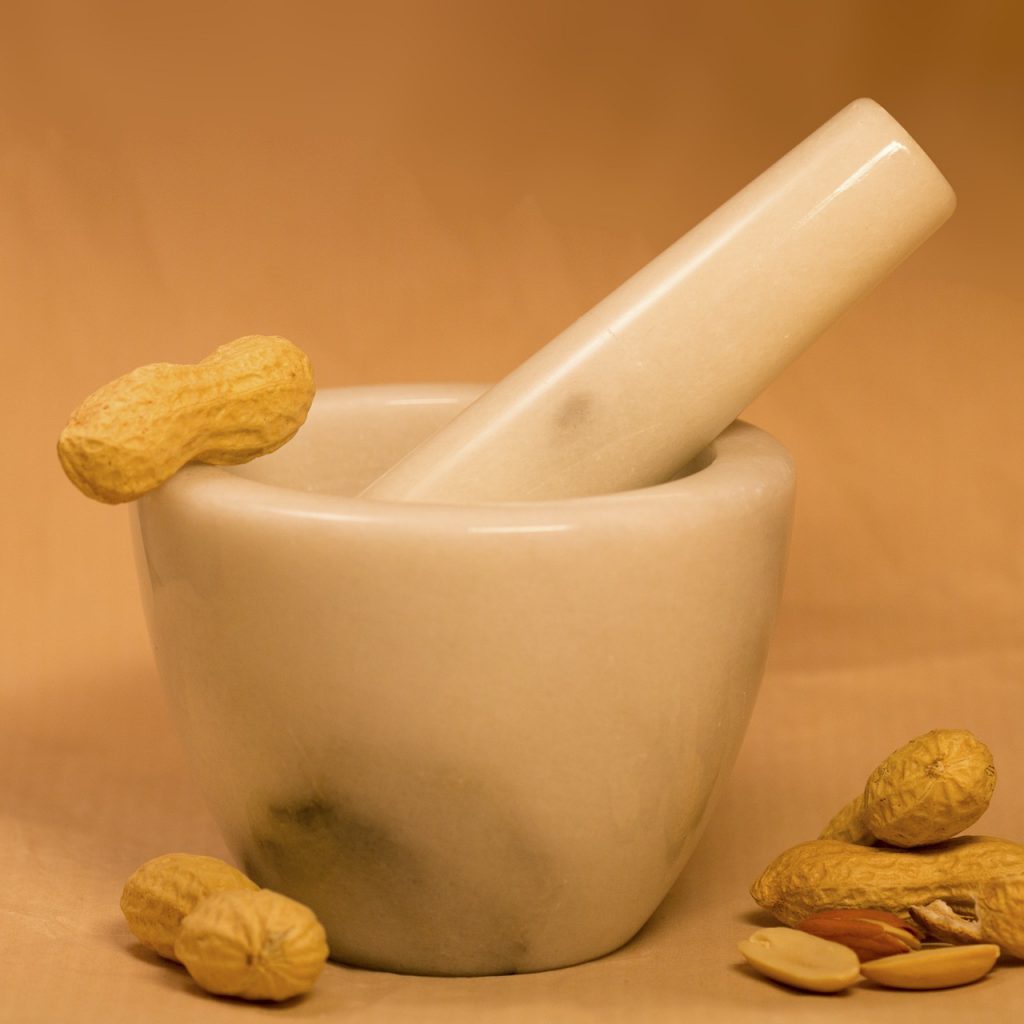
A marble pestle in a marble mortar bowl offers a smooth, tough surface that is perfect for extracting essential oils and flavors from the ingredients.
On the other hand, a wooden pestle on mortar treats delicate ingredients better. For example, grinding herbs like fresh basil leaves with a wooden pestle results in a better texture. Grinding sesame seeds is also easier with this duo. The seeds tend to fly out of the bowl when you squeeze them with a harder pestle, so you need a ceramic mortar, ideally a suribachi.
Shape
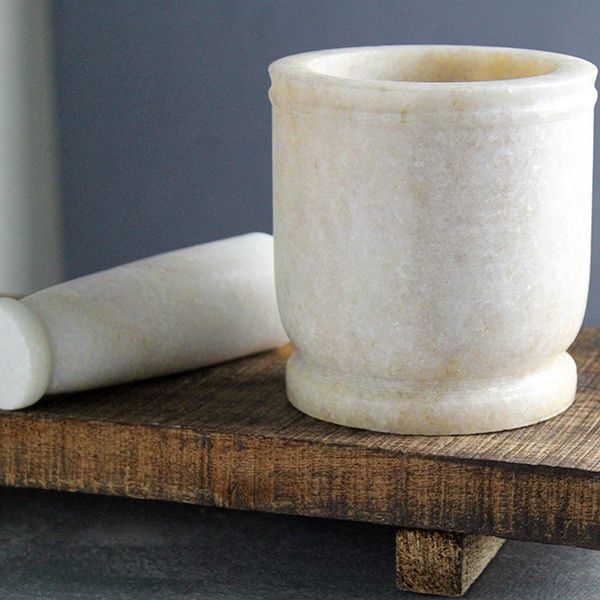
Traditional Italian mortars made of marble are usually of an evenly round bowl shape which helps you grind in a circular fashion with your wrist.
In India, marble mortars are typically cylindrical, but this shape is not the most useful one when it comes to making the most out of your mortar and pestle.
Resistance to Acidic Foods
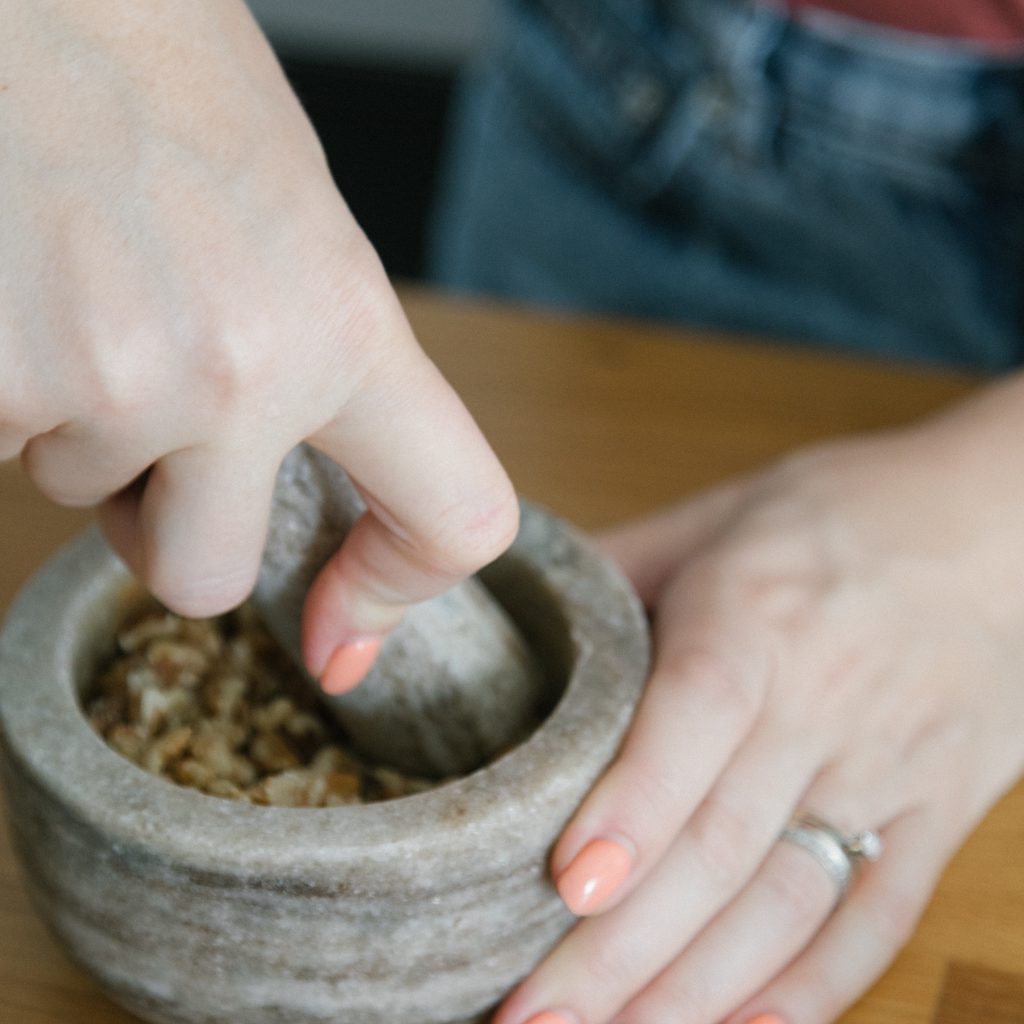
Marble is not resistant to acid. This is not a severe problem if you want a mortar and pestle set to make custom mixes of ground spices. But if you want to make sauces and salsas with acidic ingredients like tomatoes and lemon juice, the marble is destined to stain and darken.
Apart from citrus juices, coffee, tea, wine, and soda are also known to penetrate the stone’s pores, leaving a permanent stain behind. In short, marble can put your aesthetic and culinary preferences at odds with each other.
Maintenance
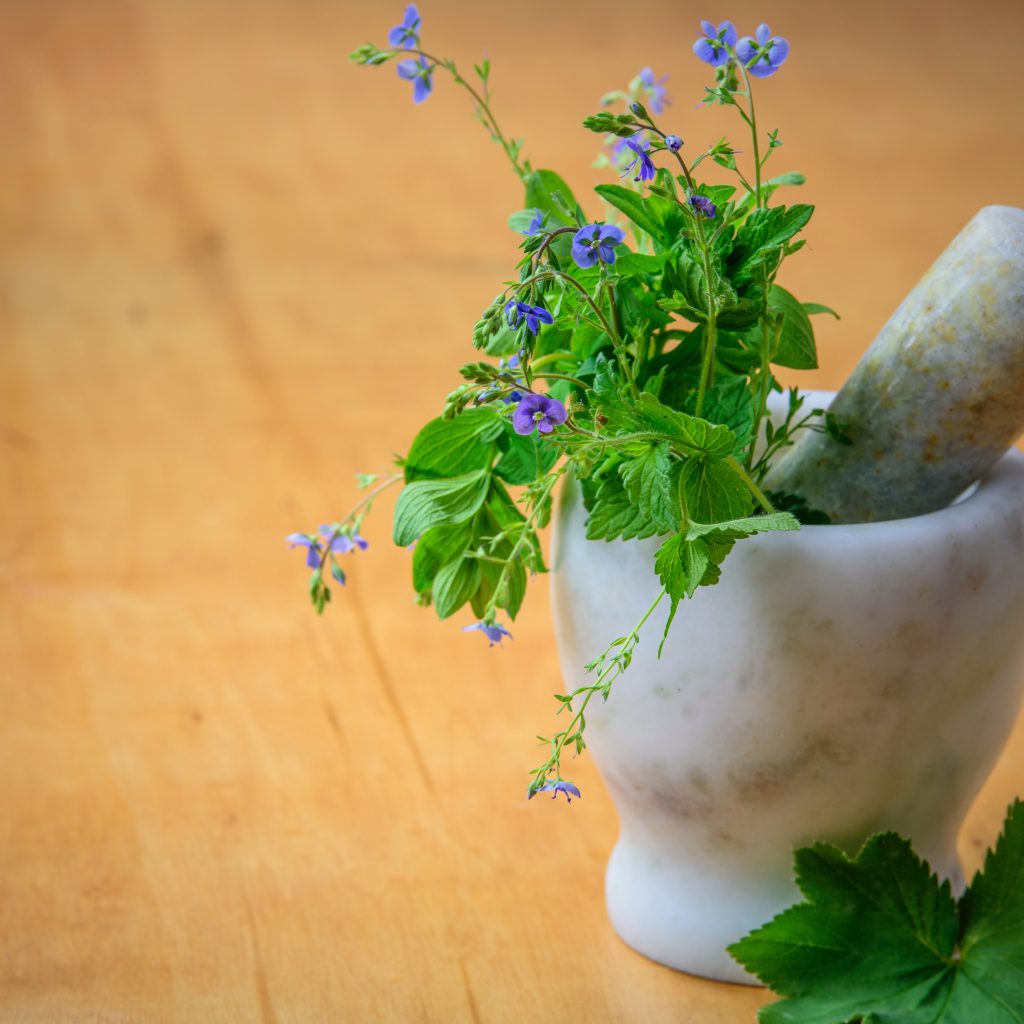
When you first get a marble set, you need to season or cure it just like you need to season a granite or volcanic rock mortar and pestle.
All these natural stones have porous surfaces with bits and pieces that can easily chip off — and you certainly don’t want loose volcanic dust in your meals. That’s why you must ensure all the small spurs on the stone’s surface are smooth before you use your natural stone — or sometimes a concrete molcajete — mortar and pestle.
But don’t panic, it’s a standard procedure to cure and season these tools to get a somewhat smooth surface to work on. For seasoning, grind a handful of dry rice to powder to sand off the mortar and pestle’s surface. Some spices and aromatics, such as garlic and black pepper, are often added to the mortar to leave a staple scent to enhance future recipes.
Clean Up
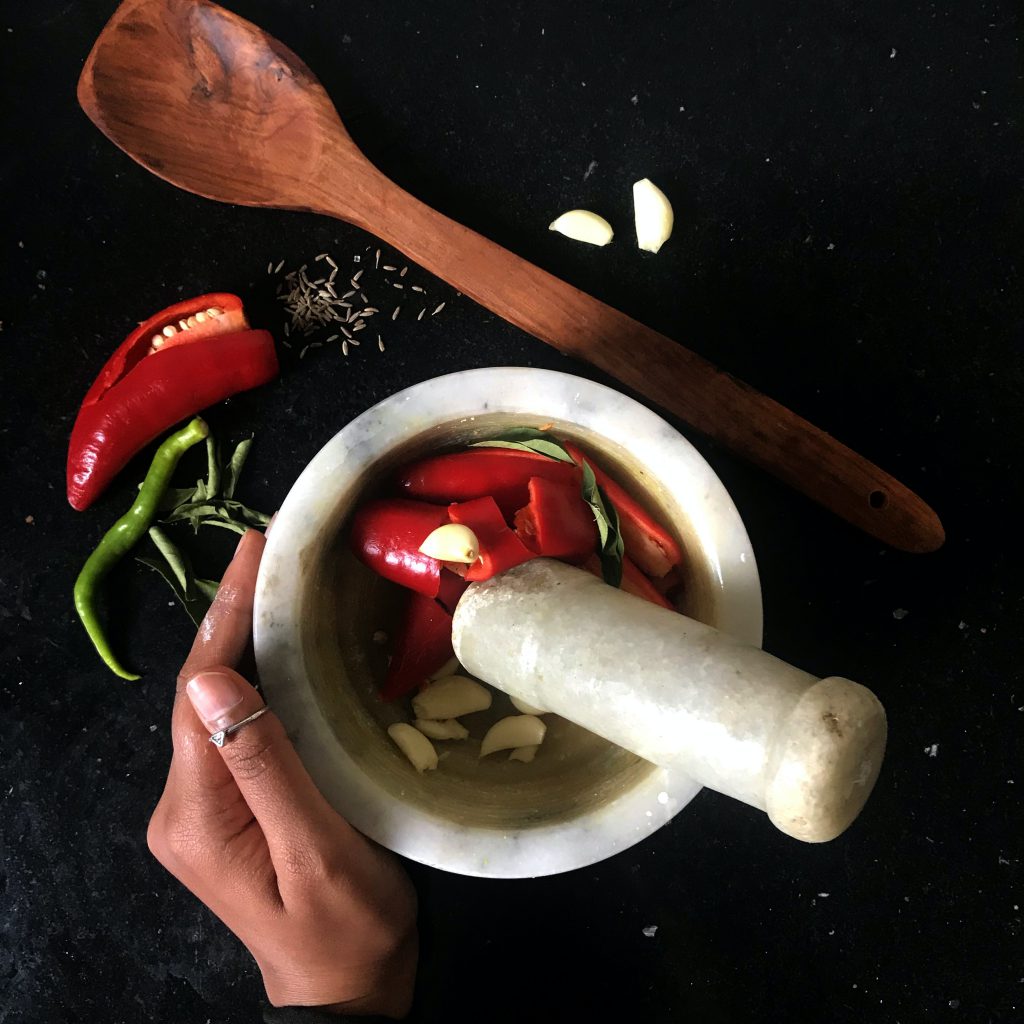
You should never put marble kitchen utensils in the dishwasher. It’s easy to think marble can endure whatever a dishwasher does, but you’ll end up with marble powder that’ll most likely stick to other dishes in the machine. And since marble is a porous stone, detergents and heavy soaps can leave permanent residues and scents behind.
Instead, scrub it under running warm water. Use tiny amounts of light, non-scented soap to eliminate the bulk of the oily residues. You can use a kitchen brush — or a dedicated old toothbrush — to get rid of the residue stuck in the pores. Then rinse the set thoroughly and air dry it before putting it away.
Overall
A mortar and pestle set made of marble is a beautiful tool that lets you grind ingredients, as long as they aren’t rock-solid. The rigid stone can crack or produce fine dust if you pound too rigorously. But the relative softness of marble also creates delicious sauces and pastes with great texture.
Marble also reacts to acids. While it doesn’t produce toxic pollutants like aluminum, it can suffer severe stains. This is only a cosmetic issue, but a good-looking set of mortar and pestle is always desirable.
As with all natural stone mortar and pestle sets, a marble set requires some maintenance. You need to condition and season it before using it for the first time. But it’s a one-time ritual and can help you forge a bond with your mortar. Once done, you can clean it using a little unscented soap and a brush after each use.
Granite Mortar and Pestle

Just like marble, granite is a natural stone, but it comes directly from the earth’s core. Granite is formed by the magma crystallizing slowly below the Earth’s surface. Just like marble, the mineral composition of the magma can give granite interesting colors and patterns, but in darker shades.
Granite mortar and pestles are known to be the traditional grinder in Thai culinary traditions. They are one of the staple kitchen tools that a Thai cook can’t do without.
Hardness
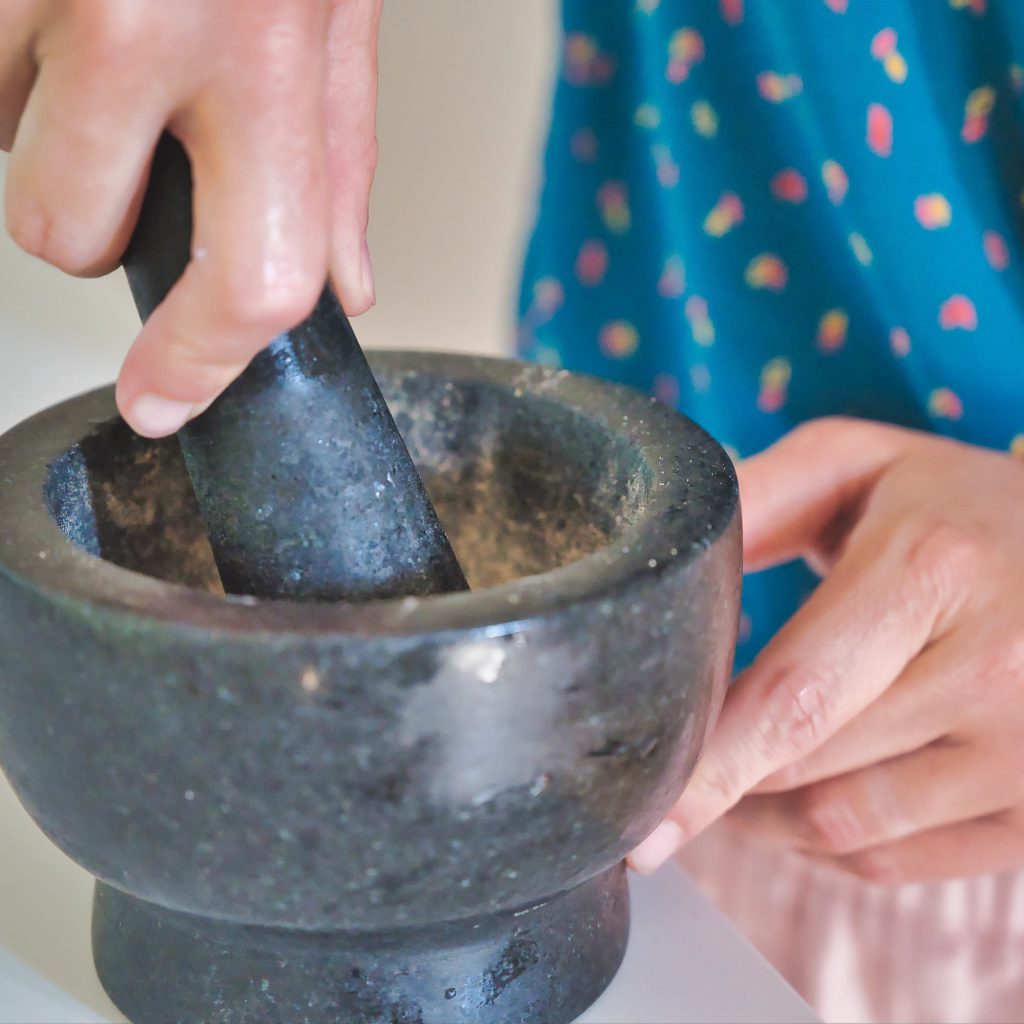
Granite is known for being the most robust natural rock, so you won’t have any trouble smashing tough ingredients in a granite mortar and pestle. Since granite is virtually impossible to scratch, it’s a kitchen utensil for life.
With a granite set, you can make delicious pastes, sauces, and spice grinds. You can even crack hard nuts like macadamia or spices like black peppercorns; just make sure to protect your eyes from the ricochets. Plus, the tiny pores on its surface help you crush and smash the ingredients easily and quickly.
Resistance to Acidic Foods
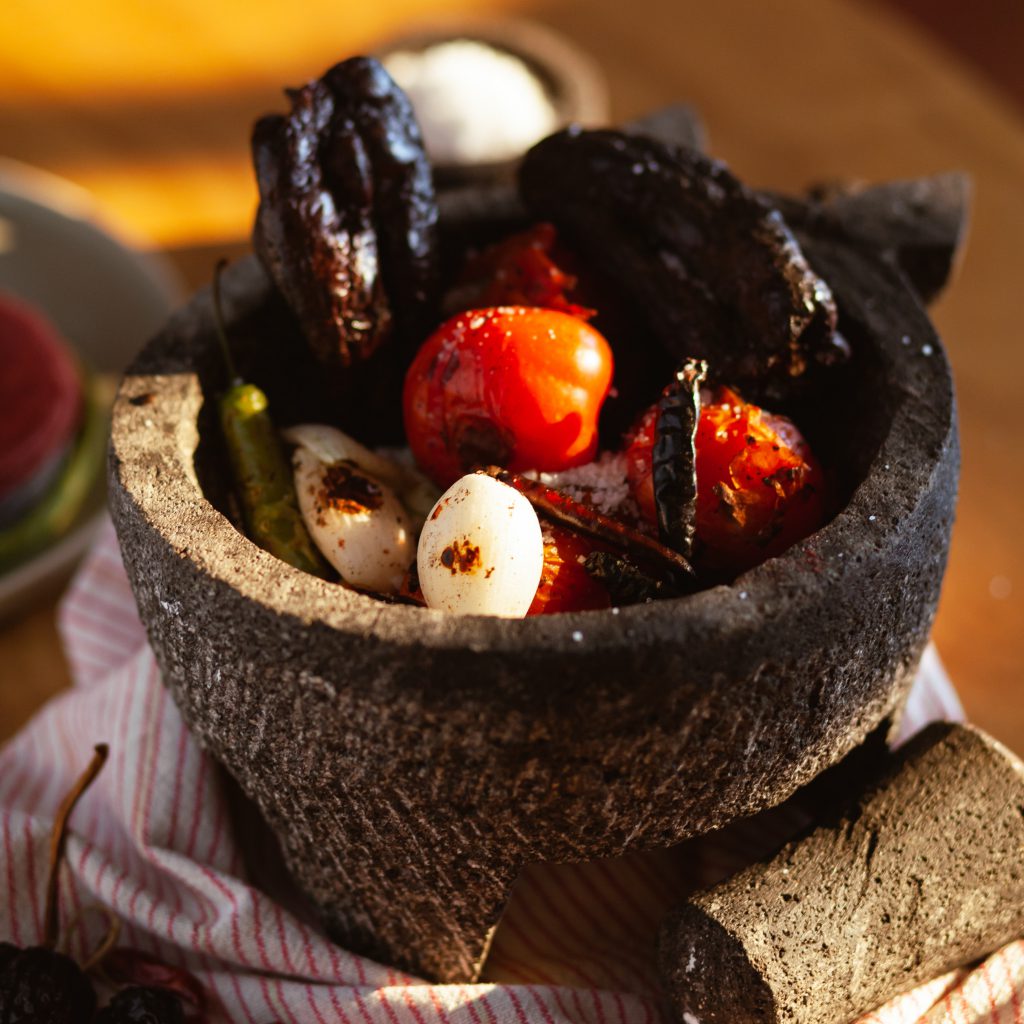
Granite is much more resistant to acid than marble. You don’t need to worry about adding citrus juices or vinegar to your granite mortar. You can only damage or leave a stain on your granite mortar if you leave acid on it for a prolonged time. So, as long as you clean, dry, and store the set properly, your mortar and pestle can serve you and your family for a very long time.
Maintenance
Just like a marble set, you need to condition and season your brand-new granite mortar and pestle set before you start grinding with it. Seasoning a granite mortar and pestle can take some time, but it’s a one-time job.
You simply grind a few tablespoons of dry rice, garlic, and spices in the mortar. Raw rice grains sand off the mortar’s excess particles, providing you with a smoother surface. Garlic collects these particles and leaves its iconic flavor on the mortar mixed with all the spices. This way, your mortar doesn’t emit granite particles in your food and adds a unique aroma to whatever you grind in it.
Clean Up

Cleaning up a granite mortar and pestle is pretty similar to a marble mortar and pestle. Rinse the set thoroughly and scrub it lightly with unscented soap. You might even skip this step if you haven’t made an oily paste. Scrub the set with a brush to remove everything that might have stuck in the pores, rinse, and air dry completely. This routine is crucial for a granite — and also marble — mortar and pestle set.
Overall
Granite is the hardest natural stone. Thanks to this, you can crack, grind, and bash with much less effort using a granite set, like KROK, than with other mortar and pestles made of different materials.
The only downside of a granite mortar and pestle is that it smashes everything pretty quickly, so leaving soft chunks in the paste for some extra texture, such as fruit chunks, can be difficult.
Which One?
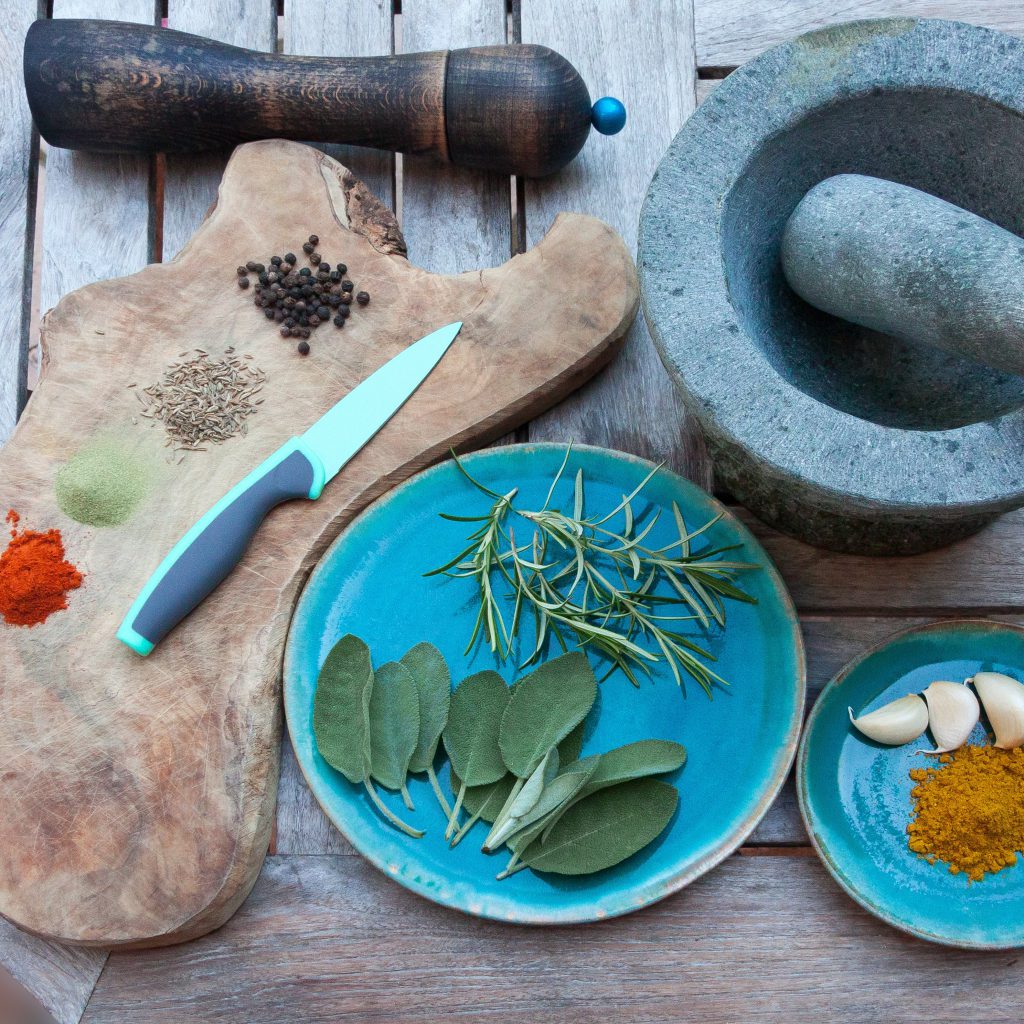
- Both marble and granite have a somewhat porous surface.
- Granite is more rigid than marble. This makes grinding and smashing with a granite mortar and pestle easier and quicker, and you can’t chip tiny pieces even if you wantед to.
- Marble and granite are natural stones with porous surfaces that absorb flavors from what you make over time. It’s typically only a faint lingering fragrance of garlic and other aromatizers, which can add a nice second or third layer of flavor to your pastes.
- Both granite and marble have naturally unique patterns and can look amazing on your countertop or as a flashy serving bowl. While marble pieces typically have more flashy patterns, they are prone to stains, especially when grinding acids. But at the end of the day, it’s purely an aesthetic concern and depends only on your preferences and style.
- Granite can do pretty much everything a marble set of mortar and pestle does and more. It’s a more versatile tool that can last longer.
Recipes Тo Try With Your Stone Mortar and Pestle
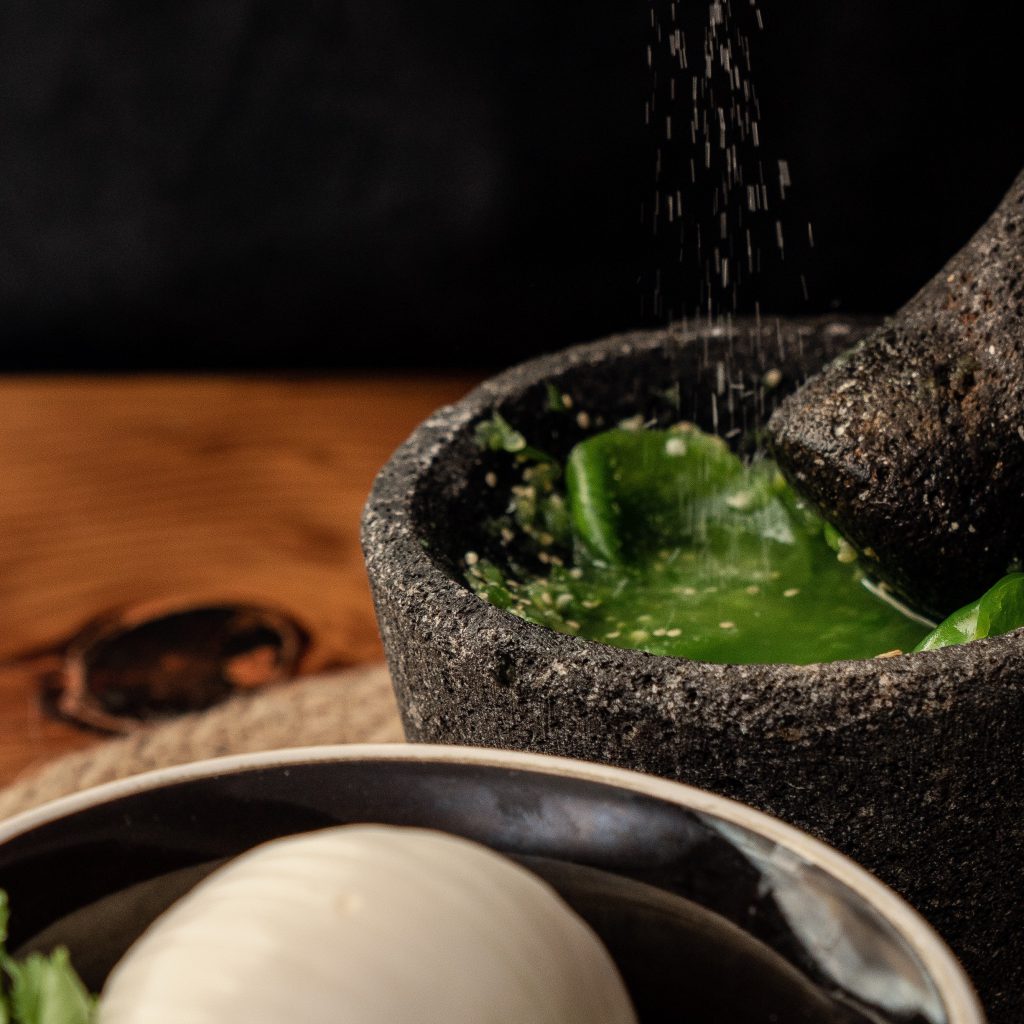
Stone mortars like the Thai granite mortar and pestle, Italian marble mortar and olivewood pestle, or Mexican mortar made of volcanic rock are all great tools for various tasks like making pesto, salsa and similar sauces, grinding dry spices, crushing herbs or dried chilies, or making a delicious emulsified sauce.
A mortar and pestle is better at bringing out the flavor and aroma molecules than a food processor or an electric spice grinder.
Unless you’re dealing with a huge batch, it’s always recommended to make your pastes, salsas, and condiments over a little elbow grease. You’ll notice the difference right away.
Here are some delicious things you can create with your stone mortar and pestle.
Pesto
The name of Italian pesto comes from pestle, and it refers to a wide range of sauces and pastes made with a set of mortar and pestle.
The most famous form of these Italian wonders is the pesto a la Genovese, a.k.a. the basil pesto. It’s made from the iconic combination of pine nuts, fresh basil leaves, olive oil, garlic, and occasional parmesan cheese. But you can make all types of pesto by replacing these ingredients with other nuts, fresh herbs, vegetables, and aromatizers.
Spice Blends
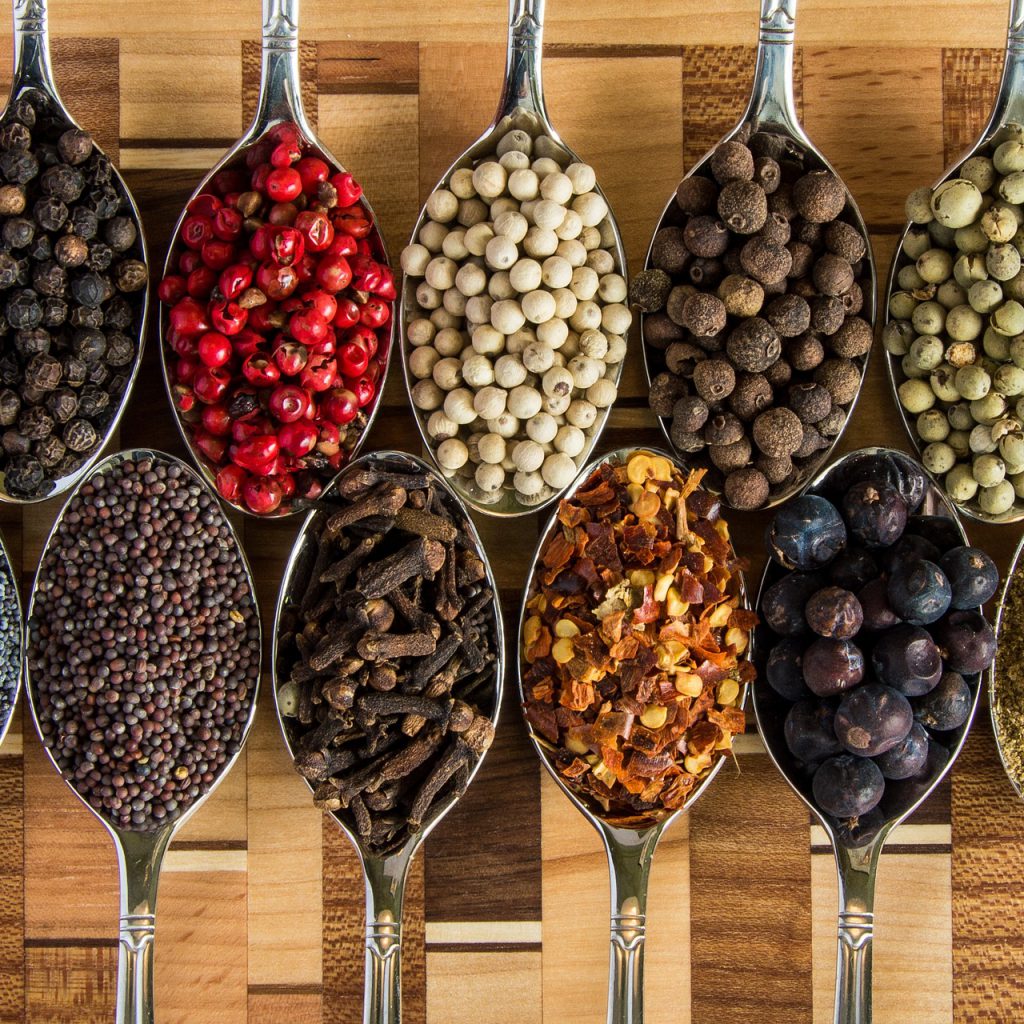
As a seasoned chef, you are well aware of the importance of freshly ground spices when you need them. The key to unlocking the delicious flavors of spices lies in the aromatic oils they contain. These oils are sensitive to heat, light, and air and are lost quickly when exposed, reducing the potency of the spices.
As they won’t keep their potency as a fine powder, it’s best to grind them just before use to maximize the flavor of your spices. There are many tools available for grinding spices, but not all are capable of handling the various shapes, sizes, and hardness of different spices.
The exception is the classic and reliable tool of the trade – the mortar and pestle. Whether you need to grind small seeds or tough roots, this tool will allow you to extract the full flavor of your spices every time.
Besides crushing spices, the mortar and pestle lets you toss in other aromatizers in there like dried chiles, garlic, or ginger, giving you a lot of wiggle room in terms of different ingredients.
Curry Pastes

For the most authentic curry paste, a granite mortar and pestle is the way to go. And don’t worry about needing any special skills or techniques – just grind the ingredients together until you have a smooth paste.
When making Thai curry paste, it’s important to note that delicate herbs and tender ingredients like fruits are typically not included. The paste is meant to be an aromatic ingredient rather than the main dish, so you want a uniform and thick mixture. This is where the sturdy stone of a mortar and pestle really shines.
Crushing the ingredients in a mortar and pestle also brings out the aromatic oils, giving the paste a rich flavor without the need for added oils or fats. So, if you’re looking to make a truly authentic Thai curry paste, reach for that trusty granite mortar and pestle.
Over and Out!
A mortar and pestle can really change the way you make sauces, pastes, and spice mixes. The crashing action brings out the natural oils and aroma molecules while imparting an interesting texture to the dishes.
Overall, granite is the winner of this competition, hands down, if you’re looking for a long-lasting kitchen tool that can also endure heavy-duty coursing. If you’re only interested in making Mediterranean dishes, a marble set can create wonders with your regular pesto recipe.
If you’re like us, you’ll want to get additional mortars for different tasks, such as wooden mortar for delicate ingredients or small sets for quick tasks.




